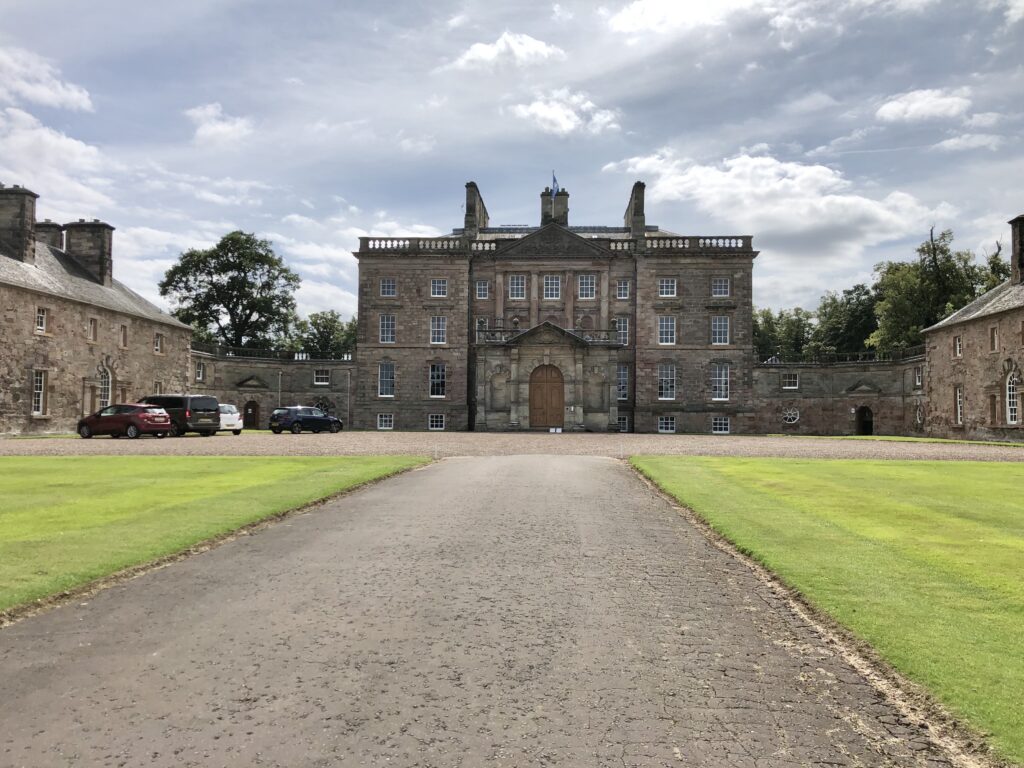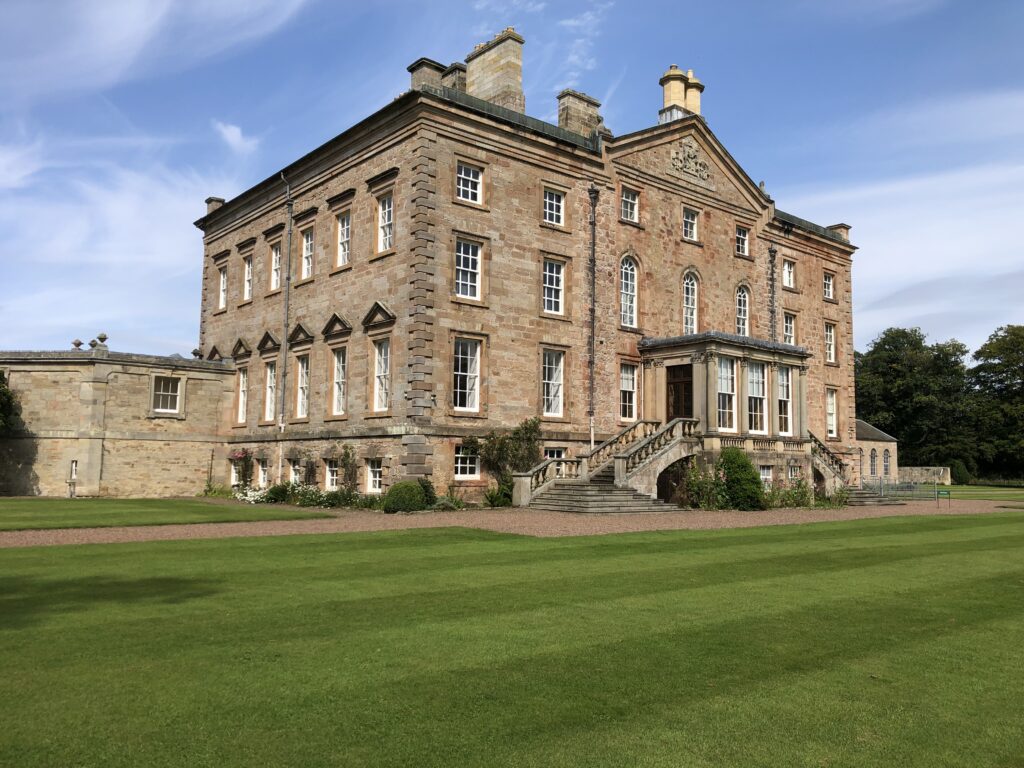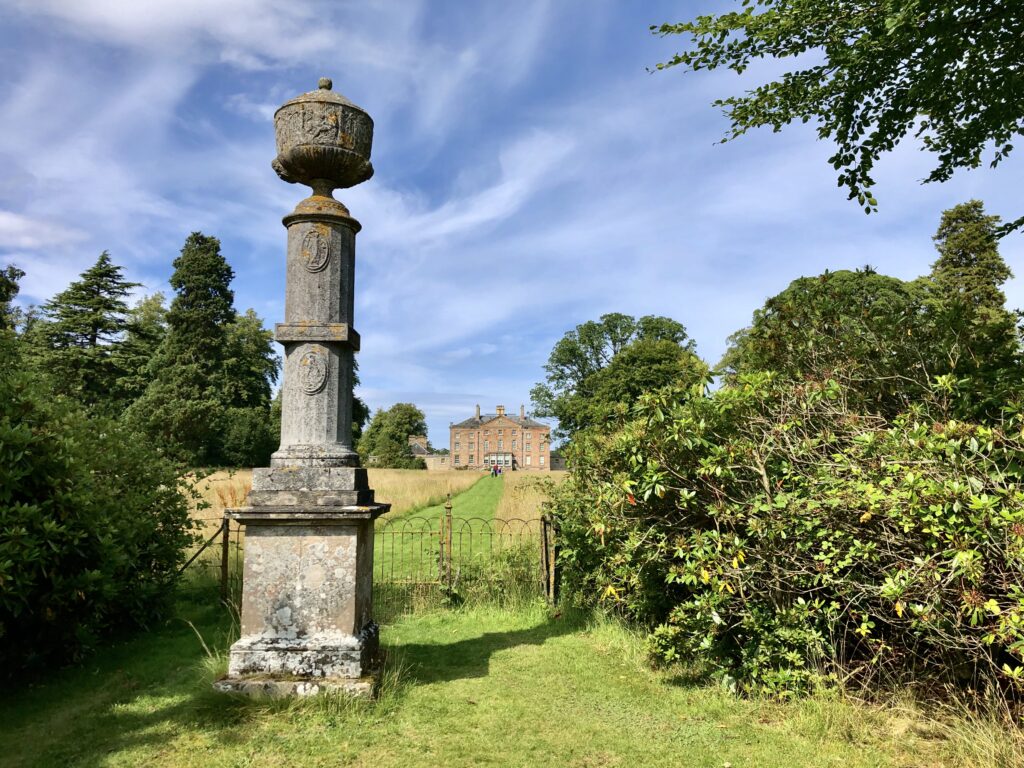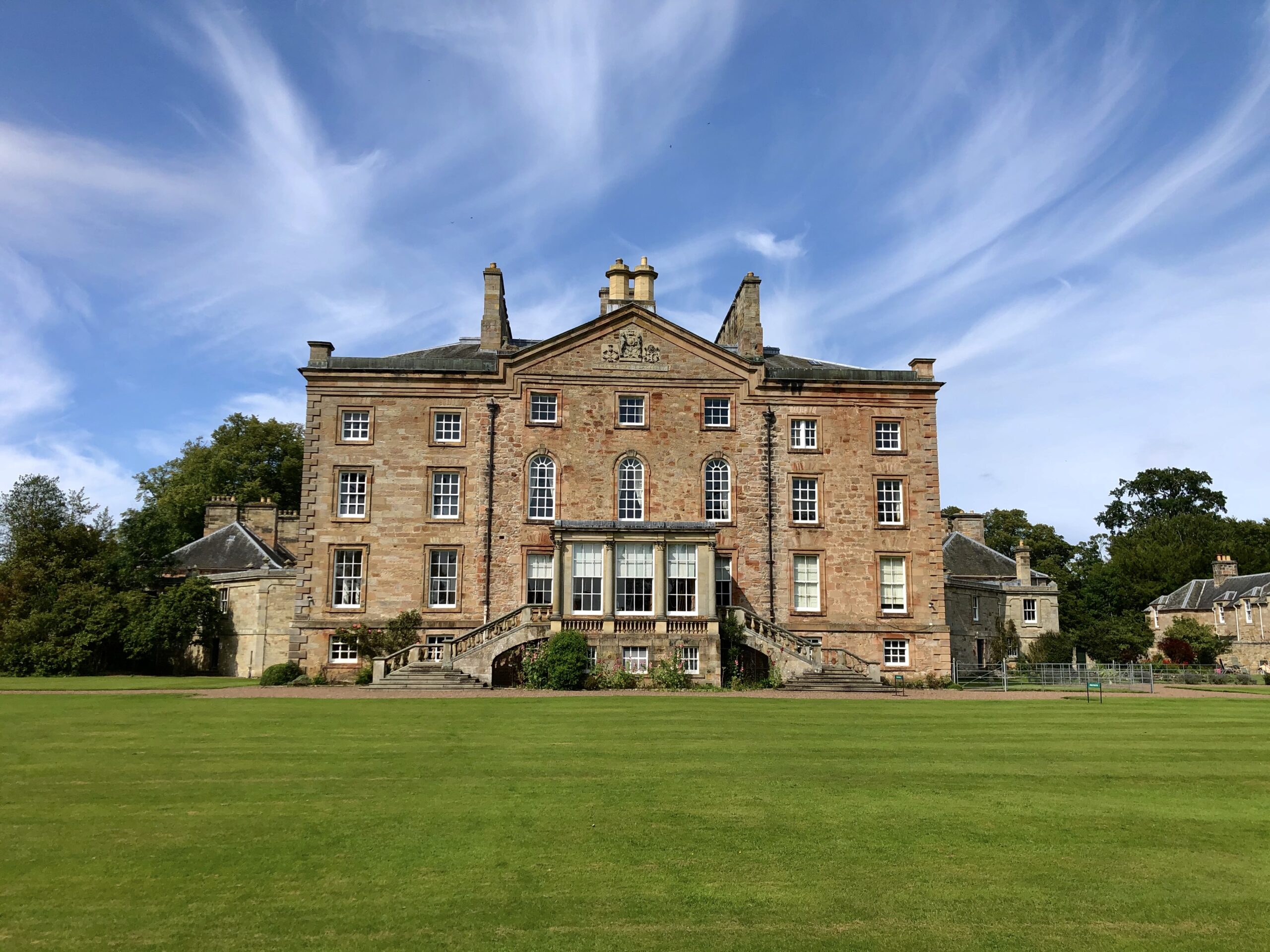Arniston House
Arniston House is one of those stately homes that you either know about or come across it by accident. If you are staying in Edinburgh, or in the Midlothian area, then Arniston House should be added to your “to-do” list.
We spent a fantastic couple of hours at Arniston House near Gorebridge. It is about a 40 minute drive from Edinburgh city centre to Arniston House. If you plan to travel to the Scottish Borders or to visit Rosslyn Chapel then this is a great addition to any tour day.
Origin of Arniston House
Arniston House sits in the heart of its 6,000 acre estate surrounded by numerous working farms. The property has been in the Dundas family ever since 1571. The year before, James was born to George Dundas and his second wife Katherine Oliphant. They visited the area with a view to purchasing some land for their baby son.

Having purchased the land, they set about making making the fine tower house habitable. The tower house is sited in what is now Arniston House. Not far from the main house it is believed that the Knights Templar had one of their bases there. When the Templars were eventually outlawed it then passed to the Knights of St John. It is quite possible that the original tower house may have been built by the Knights of St John. But with no records this cannot be substantiated.
Along with the tower house, George Dundas purchased the land surrounding it known as Arniston Mains. Initially, an extensive garden was created around the tower house. To protect the tower house from the prevailing winds, a very high wall was built. It was perhaps not the most aesthetically pleasing feature of the estate but certainly protected the house from the bitter winds.
William Adam’s Vision
However, in 1726 Robert Dundas, a rising star in the legal profession felt that his family home should be more befitting of his status. So he commissioned William Adam the famous Edinburgh architect to start work on expanding the property. Robert lived and worked mainly in his Edinburgh townhouse and this effectively gave William Adam free rein to do as he saw fit.

William Adam had a very clear vision of what he wanted to achieve at Arniston. The tower house was one of the first things to be changed. Most of the tower was reduced to ground floor level. This enabled William Adam to then build around this centrepiece his palladian vision. Unfortunately, by 1732 the family had run out of money and the project came to an abrupt halt which was disappointing for Adam to say the least.
Fortuitously the young heir to the estate, another Robert married into money and was able to recommence the work on the property. Tastes and styles had changed in the 20 years since the construction had come to a halt. Nevertheless, William Adam’s son John was commissioned to carry on his father’s work. The building today is the result of the Adam vision of the 1700s.
One Hour Tour
There is much to see at Arniston House, although because of COVID-19, only the ground floor level is open to the public during the tour. It is hoped that when circumstances return to normal, the tour will again include the upper floor. However, when you walk into the main hallway, you are immediately struck by the fine detail of William Adam. The stucco work around the ceilings and cornices are of the highest standard and can be compared favourably with those at Holyrood Palace.
Looking down from the first floor is the Hall Clock which was originally the courtyard clock. Adam shrewdly had it incorporated into the hall design. The clock can be dated back to the 1590s. Adam had a custom made frame constructed around the original clock. The frame was made by Francis Brodie, an eminent cabinetmaker in Edinburgh, and father to the notorious Deacon Brodie. There are portraits and paintings of previous generations of the Dundas family by artists such as Sir Henry Raeburn and Alexander Naysmith.
From the hallway, you proceed into the Dining Room which was extensively restored by the present owners back in 1993. Dry rot had caused extensive damage, so it required a considerable investment to make good the damage. But it is bright and airy with fine geometric designs in the ceiling.
Leading off from the Dining Room is the John Adam Drawing Room and this really is a splendid room. The wallpaper was specially commissioned on a silver background and follows a trail of branches, plants, flowers and birds. It really is so tasteful and just makes the room so much more brighter.
The Oak Room is the only part of the building which is the original part of the tower house. It is immediately recognisable as the design of William Adam with its wood panelling. It also has fantastic views north towards the Moorfoot Hills. Althea, the present owner explained that many an evening of drinking would have taken place here back in the 1700s and 1800s. Sir Walter Scott was a regular visitor to Arniston House because of his involvement in the legal profession.
The only addition to the building since then is the porch that was added to the front of the building in 1877. The sunken garden to the south of the property, as with all of the grounds, is stunningly peaceful and tranquil. You are allowed access to the sunken garden and is well worth a walk down there. On the way back to the house, you cannot help but be awestruck by the view of the house.

We highly recommend taking the tour of Arniston House. It is conducted by mother and daughter, Althea and Henrietta, present owners of Arniston House. Their knowledge of Arniston House is phenomenal and is backed up by their extensive family records. If you require further information or want to book tickets for one of the tours then you should visit the Arniston House website.
Outlander Film Location
As a footnote, for any Outlander fans, Arniston House was used as the entrance and lobby of the theatre in Wilmington attended by Claire and Jamie with Governor Tryon (in Season 4). If visitors want to include this in one of our Outlander tours, please choose the Customised Outlander Tour listing the locations that you would like to visit.

